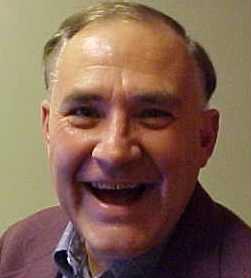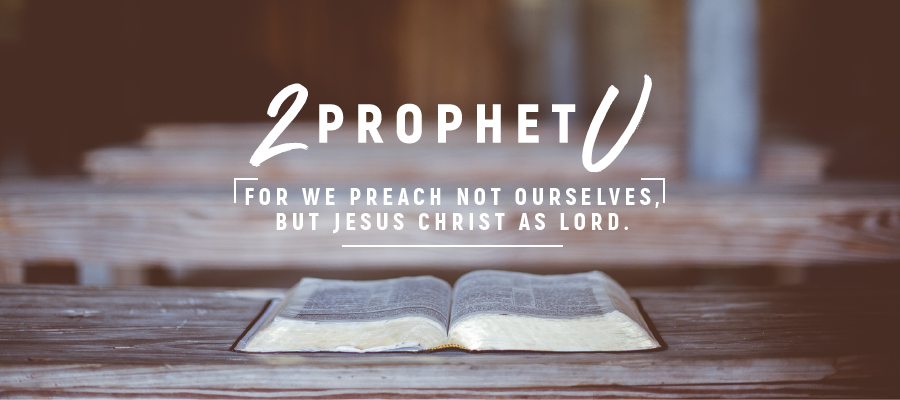Making Family Traditions
Christians have done an admirable job of cooperative training of our children. We have banded together to organize Sunday schools, Vacation Bible Schools, midweek clubs, membership classes, camps, and Bible clubs. However, in our keenness to adopt the schooling model for Christian education, we often overlook the great value of non-formal means of passing on the faith.
The schooling/classroom method is unsurpassed in its ability to cram facts into the heads of students. Non-formal methods are better at reaching the heart and values of a student. It is out of the heart and values that a Christian pattern for daily living emerges.
The best of non-formal training of children resides in the family and small church. When was the last time you heard of parents actually planning how they would teach their children? “More is caught than taught” is true, especially when it comes to your children and grandchildren. You already have a myriad of family traditions in your home—you do this without planning. However, becoming a bit more intentional will make your family traditions even better.
The idea of teaching through home traditions is not new. It has its roots in Old Testament Jewish religious education. While there were systematic synagogue schools, much of the values were passed on in the family traditions surrounding the three great feasts of the year—Passover, Pentecost and Tabernacles. This education was not classroom-oriented, but event-oriented, looking back to a real event in history as the family appropriated its meaning for the present. The Jewish pattern is a similar kind of combination family-church celebration that Christian homes can establish.
In this essay we will give special attention to the two great celebration seasons of the Christian year: Advent-Christmas and Lent-Easter.
Advent-Christmas
The “church year” begins on November 30, St. Andrew’s Day, because he is considered the first apostle. The Sunday closest to this feast is then the beginning of Advent. Christmas is also the greatest secular feast of the year so this is a good time to begin being more intentional.
First recognize the traditions you already have. Most parents are surprised at how many traditions they already have established when they start writing them down. Older parents often marvel to hear their grown-up children saying, “In my family we always used to…” The older parents blush because they don’t recall being that consistent doing that every single year. But it does not take that much repetition to make a tradition. So, how to celebrate Advent?
+One family we know uses an advent wreath on their dining room table, complete with four candles. Each Sunday night after church they invite a group of friends of all ages to their house for a time of fellowship and sharing. Before a snack, all gather in a circle around the table, sing carols and share some thoughts on what Christmas means to them. Then they light one of the candles.
+Another family, with younger children, begins their Advent season on Thanksgiving Day by making a paper chain representing the days between then and Christmas. After dinner each day, one child removes a link off the chain and part of the Christmas story is told. The children’s excitement grows as the length of the chain shrinks. This same family heightens the celebration the last seven days by allowing each child to open an inexpensive gift after the paper link is removed, reminding the children of God’s gift to us.
+Another family dresses up in costumes and acts out the Christmas story each year on Christmas Eve.
+Still another family sings carols for all their neighbors, and then leaves a small box of cookies.
+Yet another family we know sets aside a special shopping Saturday which begins by the reading of the Bible story of the Magi’s gifts and an explanation of the idea of gift-giving at Christmas. Then the entire family drives to a large nearby city for a shopping day focused on giving.
Sure, few families can establish all of these traditions, but each family can begin some practices which reflect Christian values during this great season of the year. What does your family do?
Lent-Easter
The second great event in the Christian year is Easter and the period of Lent preceding it. Here we focus on the life, ministry, death and final triumph of our Lord over the tomb. Most Protestants have fled Roman Catholic tradition so far that they observe only the final three days of this season. But that ignores the importance of teaching children through a season of learning experiences.
While most families have some sort of Christmas traditions in effect, many Christian families have no traditions in place for Easter other than dressing up for church and several secular traditions. Who knows, maybe it is because we reject the central notion of penance and self-denial of the forty days preceding the happy day of Easter. Many Protestants do not even celebrate “Good Friday” but hurry up to the “happy day” of Easter Sunday in their celebrations.
Lent begins on Ash Wednesday and continues for six weeks to Holy Week. In the northern hemisphere it is a time of long evenings and the impending arrival of spring—an ideal time for special family traditions
+One family we know adopts the most common Lenten practice—giving up something as a self-denial statement. They encourage each person in the family to select something to deny themselves of during this season. These are announced at the dinner table on Ash Wednesday, preceded by a meditation on the suffering experienced by Christ and the earliest Christians.
+Another family decides as a family what to deny themselves of—with everybody voting. One year this family decided to have only a small snack for Friday dinners and give the money saved to missions.
+Still another family we know decided to use this period as a time to “fast” from their television—they kept it turned of for the entire season of Lent and concentrated on more family activities each evening.
+Another family with small children always begins watering amaryllis bulbs on Ash Wednesday—one for each member of the family. Then they watch them grow throughout the Lenten period.
+Still another family gets together with their children each evening for a bedtime “service” focused on the final year of Jesus’ ministry, making a symbol or picture for various events. They hang these on the wall and review them each day as a litany of Jesus’ life.
+Other families focus especially on “Great Week” or “Holy Week” by retelling the activities of the last week of Jesus’ life. The Passion story is read on Good Friday at noon and they all observe a period of silence from noon to three o’clock if there is no church service to attend at that time.
+For most families the grand conclusion to this season is Easter Sunday. One family rises well before dawn to attend an Easter pageant each year at 5 a.m.
+It is quite common for families to attend a sunrise service each year. Some plan their own family sunrise service to celebrate this day.
+Still others invite a second family to Easter breakfast before attending the Easter morning service together.
Families who practice some sort of self-denial during the Lenten season seem to make the actual Easter Day celebration an even bigger event. So what does your family do?
© Keith Drury, 2005.
You are free to transmit, duplicate or distribute this article for non-profit use without permission.

Keith Drury served The Wesleyan Church headquarters in Christian Education and Youth leadership for 24 years before becoming a professor of religion at Indiana Wesleyan University. He is the author of more than a dozen books of practical spirituality, including Holiness for Ordinary People, Common Ground and Ageless Faith. Keith Drury wrote the Tuesday Column for 17 years (1995-2012), and many articles can be found on his blog “Drury Writing.”
Keith Drury retired from full time teaching in 2012. Keith is married to Sharon and has two adult sons and several grandchildren. He is retired in Florida with Sharon and enjoys cycling.
 Warren Wiersbe Podcast
Warren Wiersbe Podcast
- An error has occurred, which probably means the feed is down. Try again later.
 Sherwood Baptist Podcast
Sherwood Baptist Podcast
- An error has occurred, which probably means the feed is down. Try again later.
